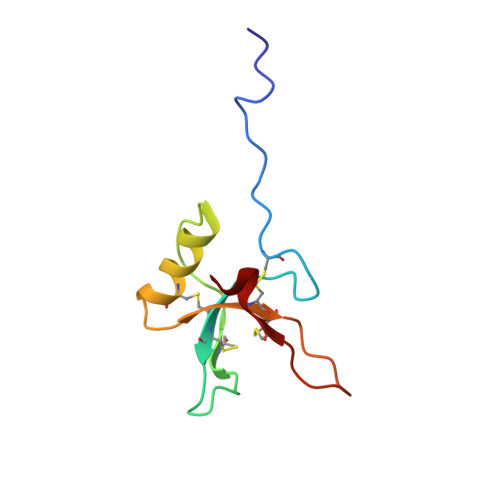Solution Structure and Interface-Driven Self-Assembly of Nc2, a New Member of the Class II Hydrophobin Proteins.
Ren, Q., Kwan, A.H., Sunde, M.(2014) Proteins 82: 990
- PubMed: 24218020
- DOI: https://doi.org/10.1002/prot.24473
- Primary Citation of Related Structures:
4AOG - PubMed Abstract:
Hydrophobins are fungal proteins that self-assemble spontaneously to form amphipathic monolayers at hydrophobic:hydrophilic interfaces. Hydrophobin assemblies facilitate fungal transitions between wet and dry environments and interactions with plant and animal hosts. NC2 is a previously uncharacterized hydrophobin from Neurospora crassa. It is a highly surface active protein and is able to form protein layers on a water:air interface that stabilize air bubbles. On a hydrophobic substrate, NC2 forms layers consisting of an ordered network of protein molecules, which dramatically decrease the water contact angle. The solution structure and dynamics of NC2 have been determined using nuclear magnetic resonance spectroscopy. The structure of this protein displays the same core fold as observed in other hydrophobin structures determined to date, including the Class II hydrophobins HFBI and HFBII from Trichoderma reesei, but certain features illuminate the structural differences between Classes I and II hydrophobins and also highlight the variations between structures of Class II hydrophobin family members. The unique properties of hydrophobins have attracted much attention for biotechnology applications. The insights obtained through determining the structure, biophysical properties and assembly characteristics of NC2 will facilitate the development of hydrophobin-based applications.
Organizational Affiliation:
Discipline of Pharmacology, School of Medical Sciences, University of Sydney, Sydney, New South Wales, 2006, Australia.














